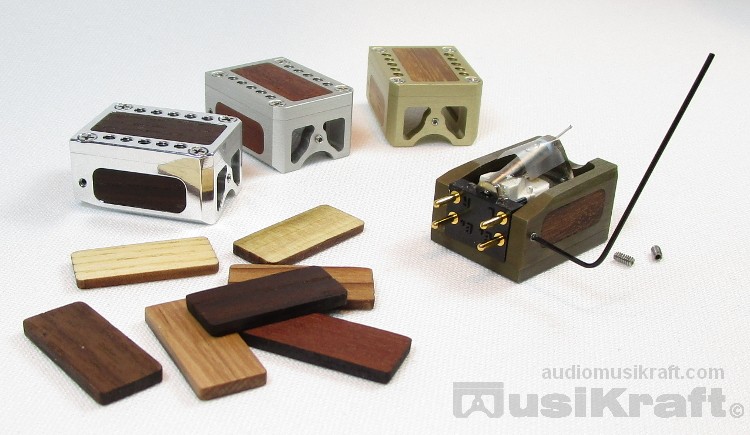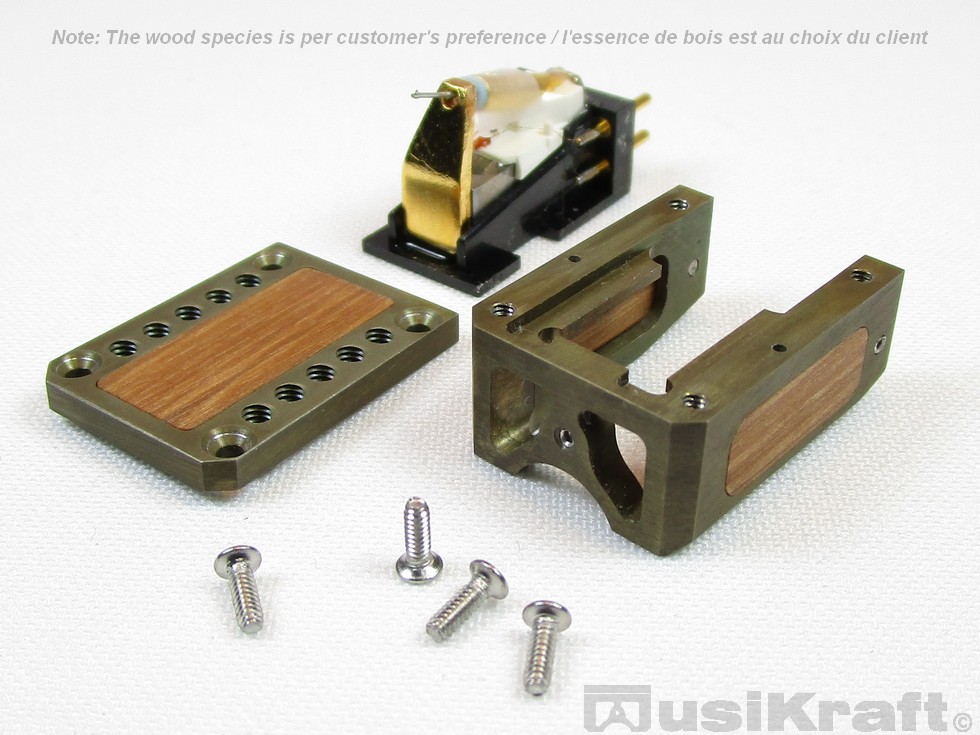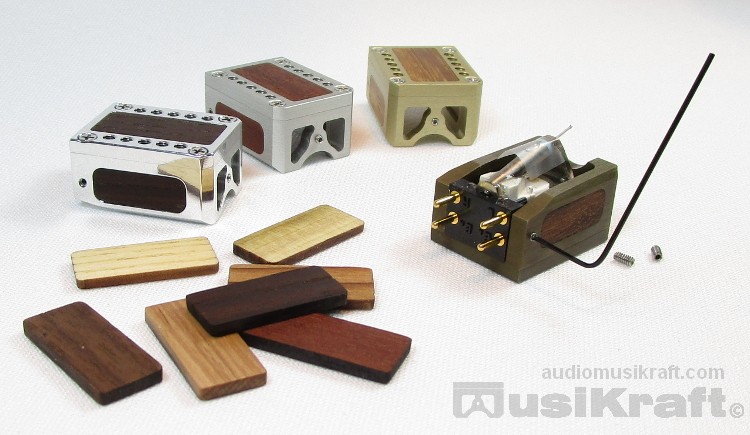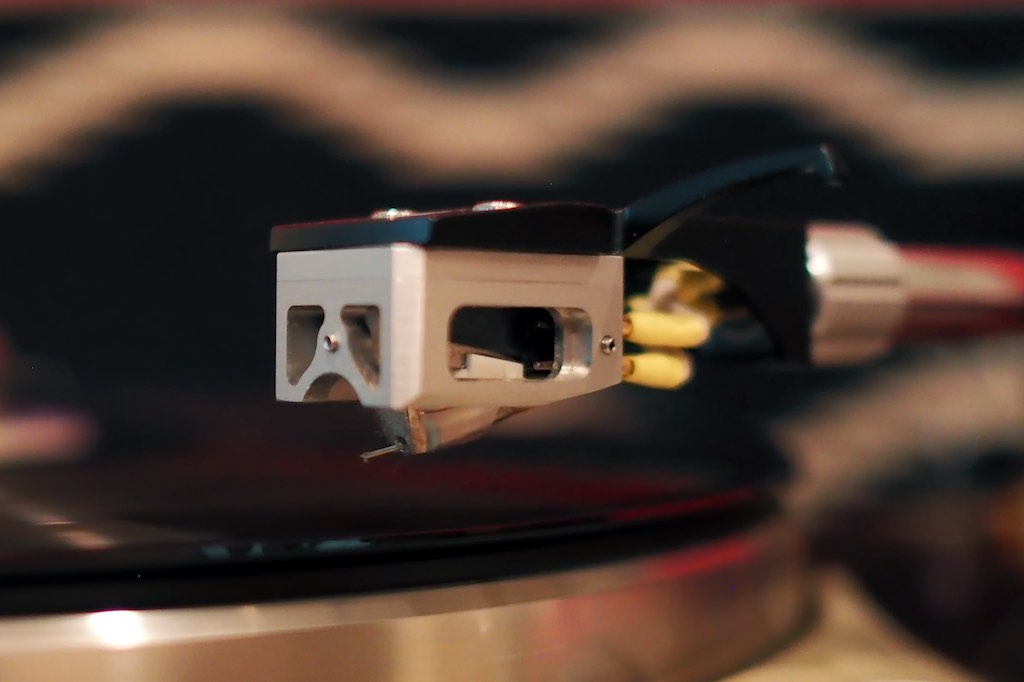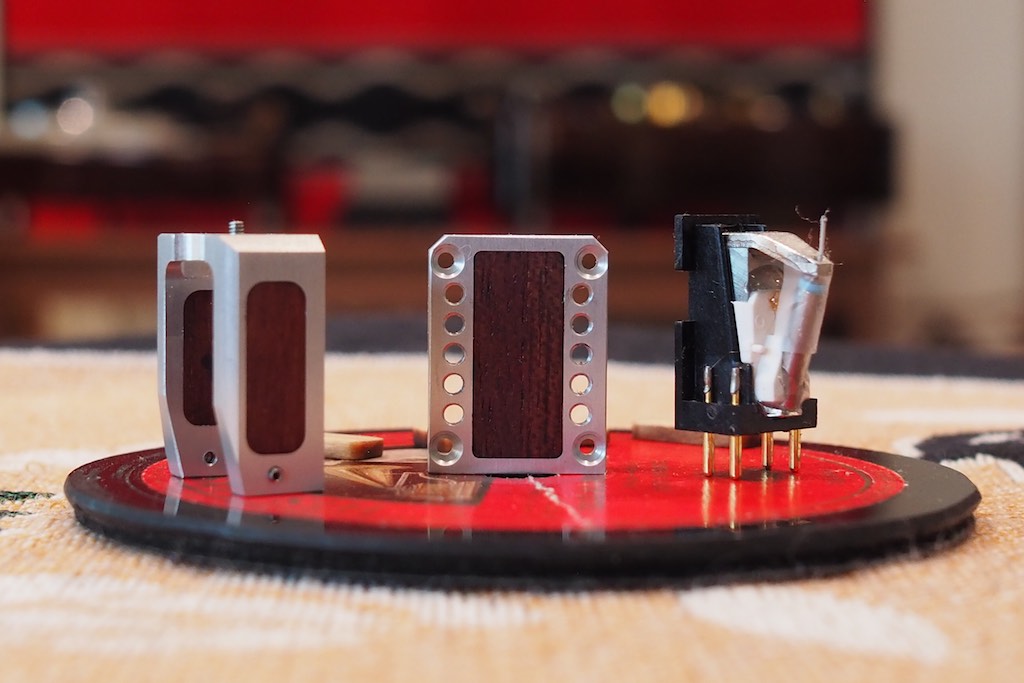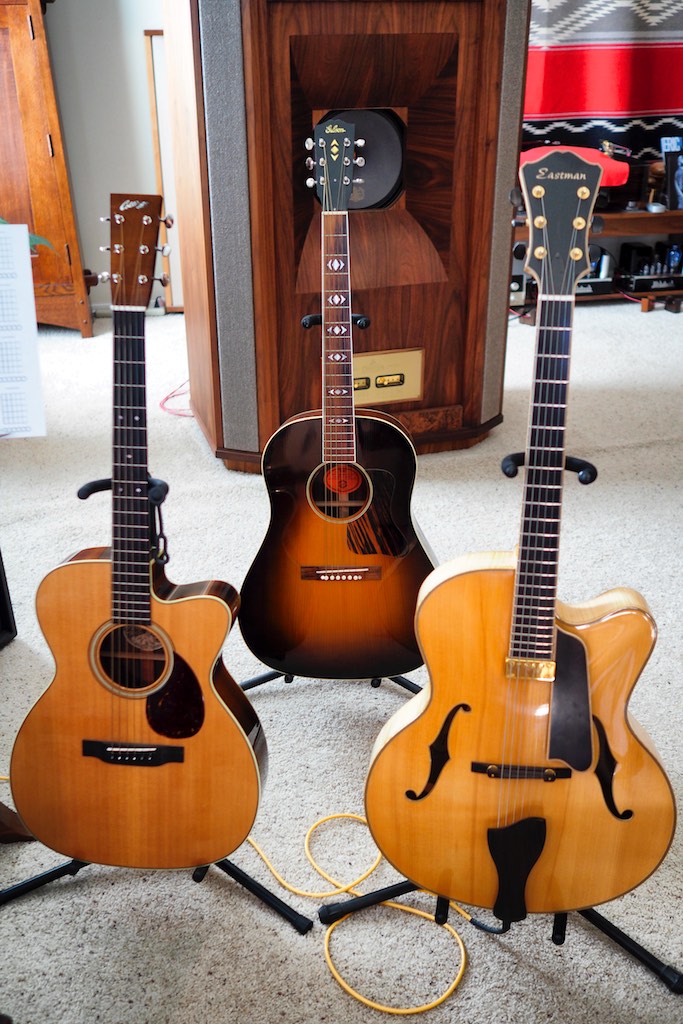I'm working hard on my review of the Audio MusiKraft Denon DL-103 for Positive Feedback, and I thought you would enjoy a preview.
¸¸.•*¨*•♫♪¸¸.•*¨*•♫♪¸¸.•*¨*•♫♪
The “Tunable” Audio MusiKraft Denon DL-103 Phonograph Cartridge
Audio MusiKraft was founded by Guy Pelletier in 2016 in Saint-Jean-sur-Richelieu, Quebec, Canada, and consists of “a small core of experienced craftsmen and devoted music lovers” whose mission is to help their customers get the maximum musical satisfaction from their vinyl collections.
Audio MusiKraft’s first product - the subject of this review - is the “tunable” Audio MusiKraft Denon DL-103 phonograph cartridge that allows the listener to voice a Denon DL-103 cartridge to best match their system needs and personal musical & sonic preferences.
The tunable Audio MusiKraft Denon DL-103 phonograph cartridge was designed to aid the music lover in affordably achieving their personalized version of “great sound, low fatigue, and lasting pleasure” by starting at the most important point in the system, the source.
Guy Pelletier
Guy Pelletier told me he has been in love with music listening from his earliest childhood, and encouraged by his father, an electronics engineer, Guy started gaining experience with electronics at an early age.
As you would expect from a music lover with experience in electronics, Guy eventually started building audio electronics. Aided by inspiration from periodicals like Speaker Builder and Audio Amateur, Guy told me he has built “countless DIY audio projects” over the years.
The DIY projects that were the most influential in informing Guy’s audio-musical philosophy were the DIY projects that Nelson Pass had shared with the audio community, like the Zen amplifier and the Bride of Zen preamplifier, where superb performance was realized from simple circuits.
Guy told me that, “At the end of the 1994 recession, when I lost my job in architecture, I started Preference Audio, my loudspeaker manufacturing company in Quebec. I developed four loudspeaker models for the market and showcased them at shows in Montreal. Four years later, because of a lack of funds and energy to get investors in a second push to export my products to other countries, I decided to close the doors. I promised myself one day I would get back into the audio industry.”
Guy went on to tell me, “During my first professional years in hifi I put a lot of emphasis on instrumentation and measurements. Then in the mid-1990s, with my close collaborator, Claude Lemaire, I realized that the psychoacoustics involved in audio are more complex than any measuring device can capture, and I began to put more trust in my ears and feelings while listening. I began to reduce my reliance on measurements, and consciously chose to subjectively “feel” my circuits’ performance, and voice them appropriately.”
Guy says that because every component in a hifi system matters so much to overall performance, that whatever influences a component’s performance is equally as important, and those influences can be used be used to creatively voice a component’s performance into the desired state.
Voicing is of huge importance in overall audio performance, says Guy.
Hot-Rodding the Denon DL-103 Phonograph Cartridge
In 2012 Guy’s close friends Richard Quirion and Stefan Figiel, both vinyl aficionados, became very interested in the performance modifications audio enthusiasts had performed on the Denon DL-103 phonograph cartridge since its inception.
Guy said, “It is not a new thing to modify the Denon DL-103. In fact, as far back as the late 1970s, Japanese audiophiles, people such as Jean-Michel Le Cléac'h and Jean Hiraga of La Maison de l'Audiophile in France, have been modifying the Denon DL-103 to improve its performance.”
Guy told me about how in the North American DIY hifi community people began exploring all kinds of ways for improving upon the Denon DL-103, including replacing its resonant stock plastic shell with other materials so that more of its true performance potential could be realized.
Guy told me that Richard and Stefan’s first goal was to design a high-performance cartridge shell to replace the Denon’s resonant stock plastic shell, which limited its ultimate performance potential.
Richard and Stefan developed many prototype cartridge shells of various shapes and materials, and Guy says, “The present Audio MusiKraft shell culminates all their work and offers many benefits.”
Guy told me that Richard and Stefan didn’t have enough time to pursue the last steps of developing the shell and then to market it, so in 2015 Guy proposed to them that he take over the final development and manufacturing steps and turn their project into a commercial reality.
Audio MusiKraft
Guy founded Audio MusiKraft in 2016, completed the final design of the shell and began to manufacture it, and then started to market it.
Guy told me, “The shell was designed to achieve a level of performance from the Denon DL-103 that would allow it to surpass even much more expensive cartridges, but at an affordable price. The primary mandate for the shell was to self-satisfy the user, to offer the flexibility to customize the cartridge’s performance so that it could be harmonized with the rest of the system according to the listener’s personal preferences.”
“If there is one place that is the most sensitive in a sound system, it is at the tip of the stylus, which has the delicate and difficult duty of extracting musical information buried deep in the vinyl groove, and then converting it into voltage through its internal motor. This voltage, measured in fractions of millivolt, is weak when compared to the volts at the output of the amplifier and loudspeaker terminals, by a factor of 10,000 or more.”
“As a consequence, it is important to view the cartridge as a sensitive generator of the music signal, and to remove all unrelated and undesired noise from its surroundings, to which it is very susceptible.”
“Holding the Denon DL-103 cartridge firmly in place, and reducing & controlling any external vibrations that could wrongly excite it, were of primary importance in our research. To accomplish that we first had to remove the resonant plastic shell of the stock Denon DL-103 and replace it with a far superior cartridge shell.”
“The Audio MusiKraft cartridge shell holds the Denon DL-103 firmly in place, reduces unwanted noise and vibration, and allows the listener to fine tune the Denon DL-103 to perform in the way that best matches their system needs and personal tastes.”
“Purchasing a high-performance phonograph cartridge can be very expensive, and not everyone has the good fortune to afford the very best ones. Also, it is not rare that some enthusiasts will buy several different cartridges that satisfy different aspects of their musical tastes.”
“The beauty of the Denon DL-103 is that it is affordable, has a reputation for quality that is unassailable, and it is used by enthusiasts both in affordable systems as well as systems costing hundreds of thousands of dollars. When it is stripped of its resonant plastic shell and installed into an Audio MusiKraft tunable cartridge shell, it offers the listener a high-performance cartridge with customizable performance in a way that no other phonograph cartridge in the world offers.”
The Audio MusiKraft Denon DL-103
For those who already own a Denon DL-103 (or DL-103R) phonograph cartridge, Audio MusiKraft offers Denon enthusiasts various cartridge shell kits to replace the Denon’s stock plastic shell, starting at $229 USD.
For those who don’t have a Denon DL-103 of their own, Audio MusiKraft also offers Denon DL-103 cartridges preinstalled into an Audio MusiKraft cartridge shell, starting at $579 USD.
The Audio MusiKraft Denon DL-103 that I have in for review utilizes the aluminum shell kit, and sells for $579 USD.
The Audio MusiKraft Denon DL-103 phonograph cartridge has three primary voicing features.
The first voicing feature is the choice of the metal that the cartridge shell is machined out of.
You can choose between aluminum, aluminum-lithium, and magnesium as a cartridge shell material, with each having its own characteristic sonic & musical signature.
The aluminum (11.4 grams), aluminum-lithium (11.2 grams), and magnesium (10.0 grams) cartridge shells are all identical in their design, but they vary in mass dependent upon the mass of the metal they are machined out of.
The available finishes for the cartridge shells are dependent upon the metal choice. The aluminum cartridge shell is available in either a clear or champagne anodized finish, the aluminum-lithium cartridge shell has a hand-polished finish, and the magnesium cartridge shell is passivated with a mil-spec micro-coating to protect it from corrosion while maintaining its natural appearance.
Guy says that musically & sonically that there is not one metal cartridge shell choice that is intrinsically higher-performing than the other two, but rather that each metal has differing musical & sonic qualities that will make it a preferential choice for the needs of a particular audio system or listener’s personal preferences.
For example, Guy recommends the aluminum cartridge shell as a versatile high-performance shell, and one that provides excellent performance in a wide variety of contexts. It is vivid & dynamic, and it is easily tunable across a wide musical & sonic spectrum through the use of different sets of wood tuning inserts, and by adjusting the tuning screws.
Guy says the aluminum-lithium cartridge shells have a slightly damped and relaxed sound compared to the aluminum shells, with a more intimate presentation of musicians and instruments. Aluminum-lithium cartridge shells have more warmth, silkier high-frequencies, and are not unlike going from a metallic dome tweeter to a silk one in a loudspeaker. Guy says he thinks the copper content in this alloy provides a well-balanced damping effect that gives this warmer and silkier result.
Guy recommends the magnesium cartridge shell for those wanting maximum transparency with the least coloration of the sound. It is the most analytical of the three, but does not overdo it, he says. Guy says the magnesium has an almost headphone-like effect, delivering a lot of the micro-information that is contained in the vinyl grooves, with excellent left to right soundstage nuance, very good decay, nice and organic textures, with good tonal balance but a less weighty presentation than the two other alloys.
The difference in cost for the different shells is a reflection of the differing prices of the source metals, the level of difficulty in machining and finishing a particular metal, and the price is not intended to reflect the ultimate performance potential each metal has to offer.
The second voicing feature of the Audio MusiKraft cartridge shell are its “tuning” screws.
A tuning screw at the front of cartridge shell allows tensioning of the Denon DL-103’s pole piece, and correspondingly alters the voicing of the cartridge by damping the pole piece and changing its vibrational characteristics.
There’s also a tuning screw on each side of the rear of the cartridge shell that allows the listener to apply tension to the inner Denon DL-103 chassis, which correspondingly alters the voicing of the cartridge by damping the inner chassis and changing its vibrational characteristics.
The third voicing feature of the Audio MusiKraft cartridge shell are the sets of tonewood tuning inserts that fit into machined receptacles in the top and side of the cartridge shell.
Audio MusiKraft offers sets of tonewood tuning inserts made out of different species of tonewoods, each of which display unique tonal properties that provide the listener with a spectrum of additional voicing possibilities.
For example, guitarists refer to how different types of tonewoods contribute to the overall voicing of a guitar by having a different mix of fundamental and overtones, harmonic content, sustain, velocity of sound, etc., and the use of tonewood tuning inserts for voicing the Audio MusiKraft Denon DL-103 are based on similar principles.
For an overview of these tonewood concepts Acoustic Guitar magazine has an excellent introductory article titled “A Tonewood Primer: How to Pick the Right Materials for Your Optimal Sound,” that you can read HERE.
Guy says that for those who are unsure about which metal shell material or sets of tonewood tuning inserts would best serve their needs, he can provide some guidance based on which direction they would like the sonics and musicality of their hifi to go.
Together, these three voicing features provide a wide spectrum of voicing possibilities intended to allow the listener to fine-tune the Audio MusiKraft Denon DL-103 phonograph cartridge to harmonize with their hifi’s particular voicing needs, and their own personal musical & sonic preferences.
¸¸.•*¨*•♫♪¸¸.•*¨*•♫♪¸¸.•*¨*•♫♪
Ok, that's all for now.
With a little luck I'll be able to get everything finished up over the weekend, and as soon as the review goes live at Positive Feedback I'll be sure to let you know.
As always, thanks for stopping by, and may the tone be with you!




